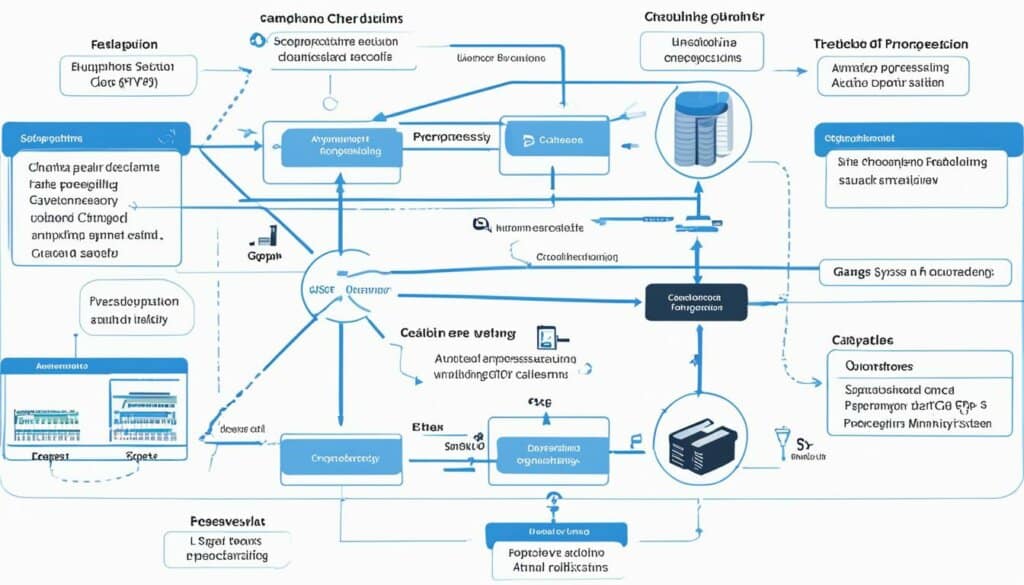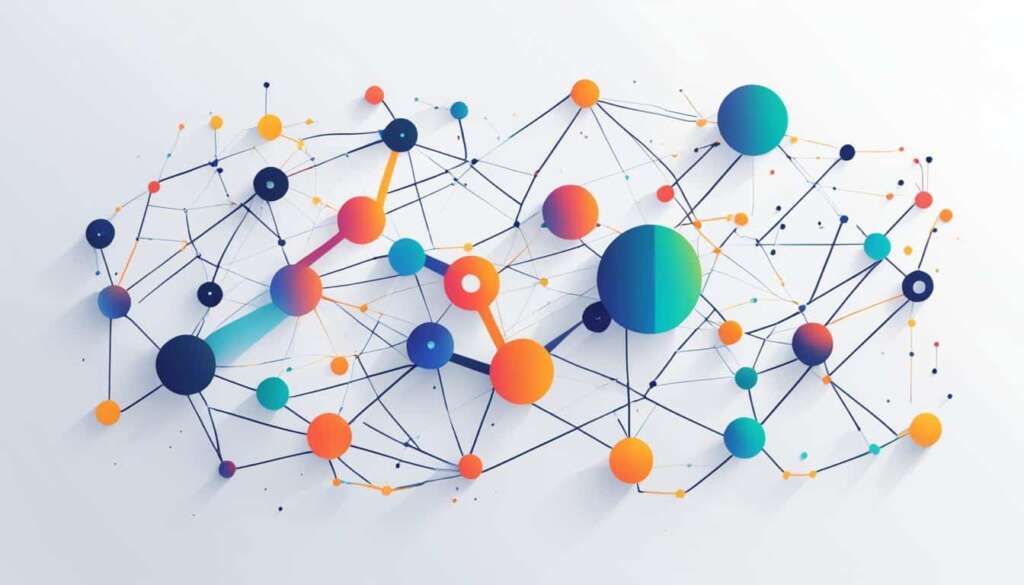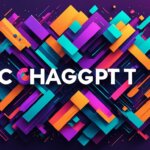Table of Contents
ChatGPT, as an advanced AI language model, relies on a diverse range of data sources to enhance its language understanding and generate contextually relevant responses. Understanding where ChatGPT gets its data is crucial in assessing its capabilities and limitations.
The primary dataset used to train ChatGPT is the Common Crawl dataset, which contains a vast collection of web data dating back to 2008. This dataset forms the bulk of ChatGPT’s training data and provides a wealth of information for the model to learn from. However, before being utilized for training, the Common Crawl dataset undergoes several essential steps such as filtering, deduplication, and augmentation to ensure higher quality data.
Additionally, ChatGPT’s training corpus includes other valuable sources such as WebText2, which consists of web page text from outbound Reddit links. Books1 & Books2, internet-based book corpora, are also part of the training data. Furthermore, English-language Wikipedia pages contribute to the diversity of the dataset.
The data preprocessing and preparation stages play a vital role in improving the quality of ChatGPT’s training data. The Common Crawl dataset is filtered based on similarity to high-quality reference corpora, and deduplication is performed at both the document level and across datasets. To increase diversity, high-quality reference corpora are added to augment the Common Crawl dataset.
Ultimately, the combination of these various data sources and the meticulous preprocessing and preparation ensure that ChatGPT is trained on a comprehensive and diverse dataset, enabling it to generate accurate and contextually relevant responses.
Common Crawl Dataset
The Common Crawl dataset is a valuable resource for training the ChatGPT language model. It is an open and free-to-use dataset that contains vast amounts of data collected from the web. The dataset is composed of petabytes of information, making it a rich source for language model training.
For training ChatGPT, a subset of the Common Crawl dataset covering the years 2016 to 2019 was utilized. This subset was carefully selected to ensure the training data represents a recent and relevant snapshot of the web. Before being used for training, the dataset went through a filtering process to enhance its quality.
Prior to filtering, the Common Crawl dataset consisted of approximately 45 TB of compressed plain text. However, to optimize the training process and improve the dataset’s relevance, it was filtered and refined. After the filtering process, the size of the Common Crawl subset used for ChatGPT’s training was reduced to approximately 570 GB of compressed plain text.
The Common Crawl dataset provides a diverse range of web data for training the language model. By incorporating this dataset, ChatGPT is exposed to a broad spectrum of topics, styles, and languages present on the web. This exposure contributes to the model’s ability to generate contextually relevant and coherent responses.
To summarize, the Common Crawl dataset serves as a crucial component in training ChatGPT, providing a large and diverse source of web-based data. Its size and varied content contribute to the language model’s ability to generate meaningful and accurate responses.
| Dataset | Original Size | Filtered Size |
|---|---|---|
| Common Crawl | 45 TB | 570 GB |
WebText2, Books1 & Books2, and Wikipedia Pages
In addition to the Common Crawl dataset, ChatGPT’s training corpus includes WebText2, Books1 & Books2, and English-language Wikipedia pages. These diverse data sources contribute to the language model’s ability to generate accurate and contextually relevant responses.
WebText2 consists of the text of web pages from outbound Reddit links. It provides a valuable source of information and text samples from various online discussions.
WebText2 helps ChatGPT understand the language used in online conversations and enhances its ability to generate relevant responses.
The Books1 & Books2 corpora comprise internet-based books, offering a vast range of literary and factual content. This diverse collection exposes ChatGPT to different writing styles, genres, and subject matter.
By training on book corpora, ChatGPT gains knowledge on various topics, including literature, science, history, and more, enriching its contextual understanding.
English-language Wikipedia pages are another crucial component of ChatGPT’s training dataset. With millions of articles covering a wide array of subjects, Wikipedia provides a comprehensive and reliable source of factual information.
The incorporation of Wikipedia pages into ChatGPT’s training data enhances its factual accuracy, allowing the model to provide information-backed responses.
The datasets, including WebText2, Books1 & Books2, and Wikipedia pages, were sampled at different frequencies during training. Higher-quality datasets were sampled more frequently, ensuring that ChatGPT is exposed to a wide range of text sources and maximizes its learning from reliable and diverse data.
Data Preprocessing and Preparation
Before training the ChatGPT model, the data undergoes a meticulous three-step process to ensure its quality and effectiveness. This section focuses on the data preprocessing and preparation methods employed to curate the training dataset.
1. Filtering Based on High-Quality Reference Corpora
In the initial step, a version of the Common Crawl dataset is downloaded and filtered. The filtering process involves comparing the dataset to high-quality reference corpora. Through this comparison, data that closely aligns with the reference corpora is extracted, while irrelevant or low-quality content is filtered out. This filtering helps to improve the overall quality of the training data for ChatGPT.
2. Deduplication for Data Consistency
Deduplication is a crucial process for ensuring data consistency and avoiding redundancy. It involves identifying and removing duplicate content, both within and across datasets. By eliminating duplicates, ChatGPT receives a cleaner and more diverse dataset, enhancing its ability to generate precise and contextually relevant responses.
3. Augmentation with High-Quality Reference Corpora
To further enhance the diversity and richness of the training data, high-quality reference corpora are incorporated. These reference corpora serve as additional sources of reliable and well-structured data. By augmenting the Common Crawl dataset with high-quality reference corpora, the training data is enriched, leading to improved language understanding and generation capabilities for ChatGPT.
This data preprocessing and preparation process plays a crucial role in ensuring that ChatGPT is trained on a high-quality dataset. It helps to eliminate noise, improve consistency, and enhance the model’s linguistic and contextual understanding.

As shown in the image above, the rigorous data preprocessing and preparation process ensures the quality and effectiveness of the training data, enabling ChatGPT to deliver more accurate and contextually relevant responses.
Importance of Model Size and Parameters
The advancement of language models, such as GPT-3, has seen a significant focus on increasing the number of parameters. This augmentation aims to enhance the model’s complexity and improve its understanding of language. GPT-3 boasts an impressive 175 billion parameters, in stark contrast to its predecessor, GPT-2, which only had 1.5 billion parameters.
By increasing the model size and parameters, ChatGPT can better grasp complex patterns and structures inherent in natural language. This augmentation enables the generation of more human-like text and a deeper understanding of the intricacies of spoken and written communication. Accompanying factors, such as attention mechanisms and transformer layers, also contribute to the model’s ability to learn and recognize patterns and structures within language.
Utilizing an increased number of parameters in GPT-3 has fueled a revolution in language understanding and the generation of highly relevant and contextually appropriate responses. By utilizing this enhanced model, ChatGPT has demonstrated remarkable language comprehension capabilities, which continue to push the boundaries of what is achievable within the realms of natural language processing.
ChatGPT’s Ability to Generate Code
ChatGPT has the ability to generate programming code due to its training on a diverse dataset of text, which includes examples of programming code. However, it’s important to understand that ChatGPT is not a full-featured programming language model, and its level of understanding of programming concepts and logic may not match that of a human programmer.
ChatGPT can generate code snippets that are syntactically correct and follow the conventions of the language. It has been trained to generate code that is readable and grammatically accurate. However, it may not always fully comprehend the logic or purpose behind the code it generates.
“ChatGPT can generate programming code because it has been trained on a large dataset of text that includes examples of programming code.”
For validation and debugging purposes, human intervention is still required to ensure the code generated by ChatGPT meets the desired logic and functionality. While ChatGPT demonstrates proficiency in generating code, it is important to approach the output with caution and verify it independently.
| ChatGPT’s Ability to Generate Code | ChatGPT Language Understanding | ChatGPT Programming Code Limitations |
|---|---|---|
| ChatGPT can generate programming code snippets | ChatGPT has limited understanding compared to human programmers | Validation and debugging require human intervention |
Although ChatGPT demonstrates proficiency in generating code, it is important to recognize its limitations and ensure human oversight in the development process. The expertise and critical thinking abilities of human developers are indispensable for complex programming tasks.
DALL-E-2 and Image Generation
DALL-E-2, OpenAI’s text-to-image generation model, utilizes a powerful diffusion model to generate realistic images based on textual inputs. This advanced model relies on a dataset called LAION, which contains billions of text-image pairings scraped from the internet. The LAION dataset is derived from the widely recognized Common Crawl dataset by parsing HTML IMG tags with alt-text attributes. As a result, a specialized dataset known as Laion5B is created, which forms the foundation for DALL-E-2’s remarkable image generation capabilities.
DALL-E-2’s ability to generate images from text is enabled by the extensive training on the LAION dataset. By learning from the vast array of visual-textual associations, DALL-E-2 becomes proficient at translating written descriptions into impressive and visually coherent images.
Conclusion
ChatGPT, a highly advanced language model, draws data from a diverse range of sources to provide accurate and comprehensive responses. Its training dataset includes the Common Crawl dataset, WebText2, Books1 & Books2, and English-language Wikipedia pages. However, before training, the data undergoes meticulous curation, filtering, and preparation processes to ensure optimal quality.
This meticulous approach guarantees that ChatGPT generates contextually relevant responses, making it a valuable tool for information retrieval and communication. Moreover, the model’s ability to generate programming code and create text-to-image outputs is a testament to the extensive training it receives. This training includes exposure to datasets containing programming code examples and text-image pairings.
As AI models like ChatGPT evolve, understanding the origins and training processes behind their data becomes increasingly important. This knowledge helps us accurately assess their capabilities and limitations. By utilizing a combination of datasets and a rigorous training process, ChatGPT sets the standard for language models and demonstrates the potential of AI-powered language understanding and generation.
FAQ
Where does ChatGPT get its data?
ChatGPT is trained on a variety of data sources, including the Common Crawl dataset, WebText2, Books1 & Books2, and English-language Wikipedia pages.
What is the Common Crawl dataset?
The Common Crawl dataset is an open and free-to-use dataset that contains petabytes of data collected from the web. It provides a diverse range of web data for training the language model.
How was the Common Crawl dataset used for ChatGPT’s training?
A subset of the Common Crawl dataset covering the years 2016 to 2019 was used for training ChatGPT. The dataset was filtered, deduplicated, and augmented to ensure higher quality training.
What other datasets were used in training ChatGPT?
In addition to the Common Crawl dataset, ChatGPT’s training corpus includes WebText2, Books1 & Books2, and English-language Wikipedia pages. These datasets were sampled at different frequencies during training to increase the model’s accuracy and relevance.
How was the data prepared before training?
The data went through a process of downloading, filtering based on reference corpora, deduplication, and augmentation with high-quality corpora. This ensured higher-quality training data for ChatGPT.
What is the importance of model size and parameters?
Increasing the number of parameters in models like GPT-3 enhances model complexity and improves language understanding. GPT-3 has 175 billion parameters, allowing it to learn complex patterns and structures of natural language.
Can ChatGPT generate programming code?
Yes, ChatGPT can generate programming code as it has been trained on a dataset that includes examples of programming code. However, it may not fully understand programming concepts and logic like a human programmer.
How does DALL-E-2 generate images?
DALL-E-2, OpenAI’s text-to-image generation model, is trained on a dataset called LAION. LAION contains billions of pairings of text and images scraped from the internet, serving as the basis for DALL-E-2’s image generation capabilities.
What are the sources of ChatGPT’s data?
ChatGPT’s data comes from the Common Crawl dataset, WebText2, Books1 & Books2, and English-language Wikipedia pages, carefully curated and prepared for training the model.
How does the data collection and training process contribute to ChatGPT’s capabilities?
The diverse data sources used in training allow ChatGPT to generate more accurate and contextually relevant responses. The use of large datasets and preprocessing techniques ensures higher-quality training for the model.













